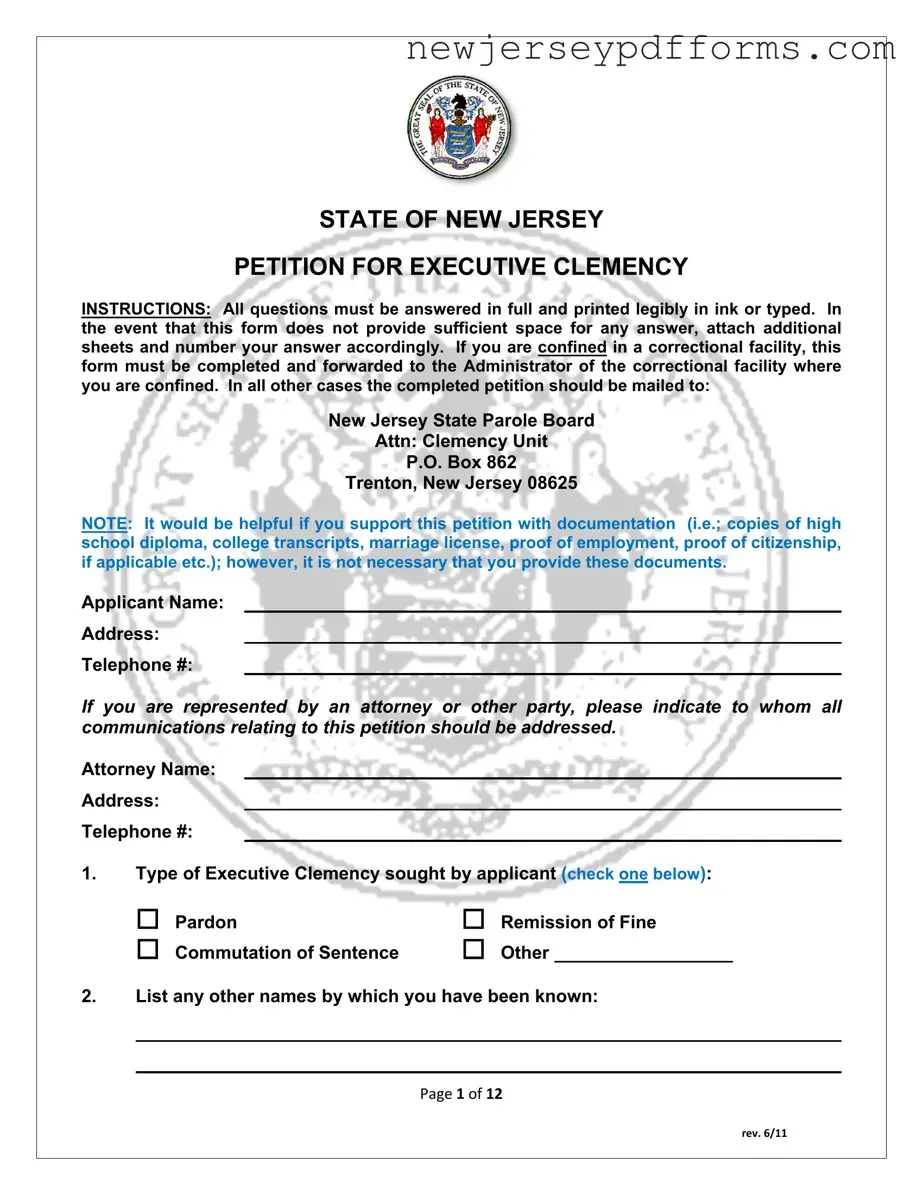What is the purpose of the New Jersey Executive Clemency form?
The New Jersey Executive Clemency form is designed for individuals seeking clemency from the state. Clemency can take various forms, including a pardon, remission of a fine, or commutation of a sentence. This form allows applicants to present their case for clemency, providing necessary personal information and reasons for their request. It serves as an official petition that is reviewed by the New Jersey State Parole Board, which ultimately makes a recommendation to the Governor.
Who is eligible to submit the Executive Clemency form?
Any individual who has been convicted of a crime in New Jersey and is seeking clemency may submit the form. This includes those currently incarcerated as well as those who are no longer in custody. However, the applicant must provide accurate and complete information regarding their criminal history, personal circumstances, and reasons for seeking clemency. Additionally, individuals who are under an immigration detainer or facing deportation may also apply, but this could affect the outcome of their petition.
What information must be included in the form?
The form requires comprehensive details about the applicant, including personal identification information such as name, address, date of birth, and social security number. Applicants must also provide information about their criminal history, including arrest records and the circumstances surrounding each conviction. Furthermore, the form asks for details about family, education, employment history, and any military service. This information helps the reviewing body understand the applicant's background and the context of their request for clemency.
How should the completed form be submitted?
If the applicant is currently confined in a correctional facility, they must complete the form and send it to the Administrator of that facility. For those not in custody, the completed petition should be mailed to the New Jersey State Parole Board, specifically to the Clemency Unit at the provided address. It is important to ensure that the form is filled out completely and legibly, as incomplete submissions may delay the process or lead to rejection.
Is it necessary to provide supporting documentation with the form?
